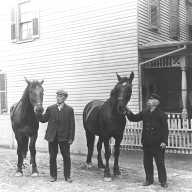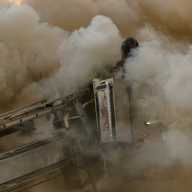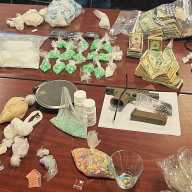So you want to vote for Al Gore or George Bush or Hillary Clinton or Rick Lazio? You could lose your right to vote by not knowing how to cast your ballot. Heres a primer on how to keep your ability to vote:
Are you registered? Its now too late to register. Until seven days before the election, you had the ability to change your registration to your current address if you moved. Make up your mind to register next year.
If you are registered, you will receive a Board of Elections mail notice telling you where your polling place is. Note three things: a) The address of the polling place, b) Your Assembly District, and c) Your Election District.
Sometime after 6 a.m. and before 9 p.m. on election day, go to the place listed on the Board of Elections notice. You may bring with you any literature you want to help you vote. You may notice people outside the polling places handing you cards listing the candidates they support. You may take these into the polling place or throw out the literature as you desire.
You will notice that on the walls of the polling place there is a sample ballot. Many people read the sample ballot before they enter the polling booth so they can see how the ballot is arranged before they vote. If you do not speak English well enough to understand the ballot, there will be sample ballots in several different languages Spanish and Chinese are the most common.
There will be many tables at the polling place. This is where the Board of Elections Inspectors sit. There are four inspectors for each Election District, usually two Democrats and two Republicans. Look for the sign that matches your Assembly District and Election District. That is where you vote. Stand in line waiting for your chance to vote.
Give your name to one of the election inspectors. That inspector will check your name on a roll of voters registered to vote in this district. When the inspector finds your name on the list, he or she will ask you to sign your name in the book next to a copy of your signature on file with the Board of Elections.
If the inspector does not find your name, but you believe that you are registered, tell the inspector that you want to vote by Affidavit. A paper affidavit ballot will be given to you. Follow the instructions on the ballot, fill out the ballot, put it in the appropriate envelope, and put it into the closed and locked ballot box provided to the inspectors by the Board of Elections. At the end of the day, Affidavit Ballots will be collected. The name on the ballot will then be compared with the accurate records at the Board of Elections. If your name is on the registration rolls, your ballot will be counted. If you are not registered, your ballot will be discarded.
The inspector will give you a number. This works like the numbers in a bakery. If you are number 195, you must wait until numbers 193 and 194 have voted. Then you give your number slip to a waiting inspector and enter the voting booth.
Inside the voting booth, the curtains are already closed. The inspector has already pre-set the machine so that you need do nothing else. Do not push the large handle on the voting machine to record your vote until you are through. Push individual small handles to record your vote for each office. You should by now be familiar with the ballot and have made your decisions, but if you are not you have all the time you need within reason to make your decisions in the voting booth. Every time you push down a lever, an X will appear in a small window. Do not forget to vote on the bond issue and for offices like Assembly and State Senate lower down on the ballot. When you are through, push the large lever to the right to record your vote, open the curtains, and step out. You have now voted.
At one time, voting machines had open curtains and each voter had to enable the machine by pushing a lever to close the curtains. This is no longer true. If you push the large lever to the right before you have voted, the machine will record your ballot as blank and you will not have the right to go back into the machine to vote. Be sure you only push the large lever once.
If the voting machine is broken when you come to the polls, or if the machine is jammed, you cannot use the machine to vote. This does not mean that you have lost your right to vote. Many inspectors do not realize that in this circumstance, a voter can use a paper ballot to vote. Ask one of the policemen present at the poll to help get out the hundred or so paper ballots provided at every polling site for such a circumstance. If the machine has been broken for some time, the polling site may be out of paper ballots. In this case, ask the policemen to call immediately for more ballots. In the meantime, do not leave. If you leave now, and cannot come back before 9 p.m., you will lose the right to vote. It is very inconvenient, but the right to vote is precious and is worth the wait.
If you are in any way deprived of the right to an absentee ballot or a paper ballot (suppose someone tells you that these things do not exist), you have the right to call an Assistant Attorney General to straighten out matters. Ask the policeman to give you the phone number of the Attorney Generals Office of New York State (or find it in a phone book or from directory assistance). There are hundreds of specially deputized Assistant Attorneys General available during election day to handle problems or complaints. If you are illegally denied the right to vote, make sure that you complain to one of the Assistant Attorneys General about what happened.
You have a right to vote. You have a personal duty to vote. How you vote is a matter for your own conscience, but it is both your responsibility and the responsibility of the Board of Elections to make voting as easy and trouble free as possible. May the best candidates win.
(For more on the election see page 11 for a list of all the candidates, as well as the Queens Courier endorsements, page 18 for Arthur Nitzburgs campaign analysis, and watch The Couriers TV show this Friday, November 3 at 8 p.m. on QPTV Channel 34 for an in-depth discussion of the election.)






























